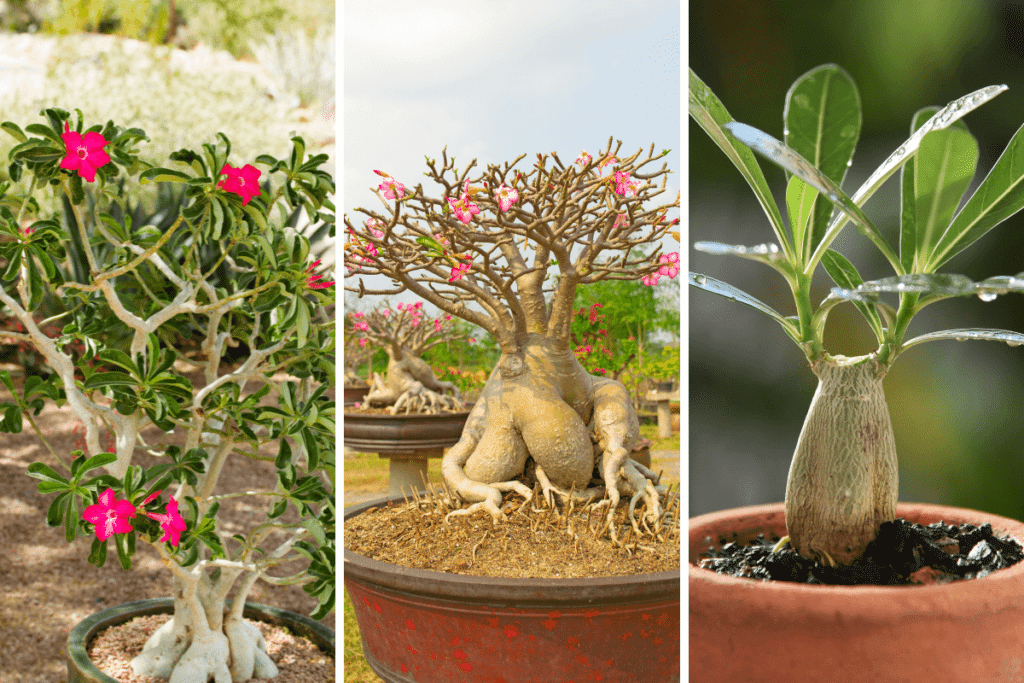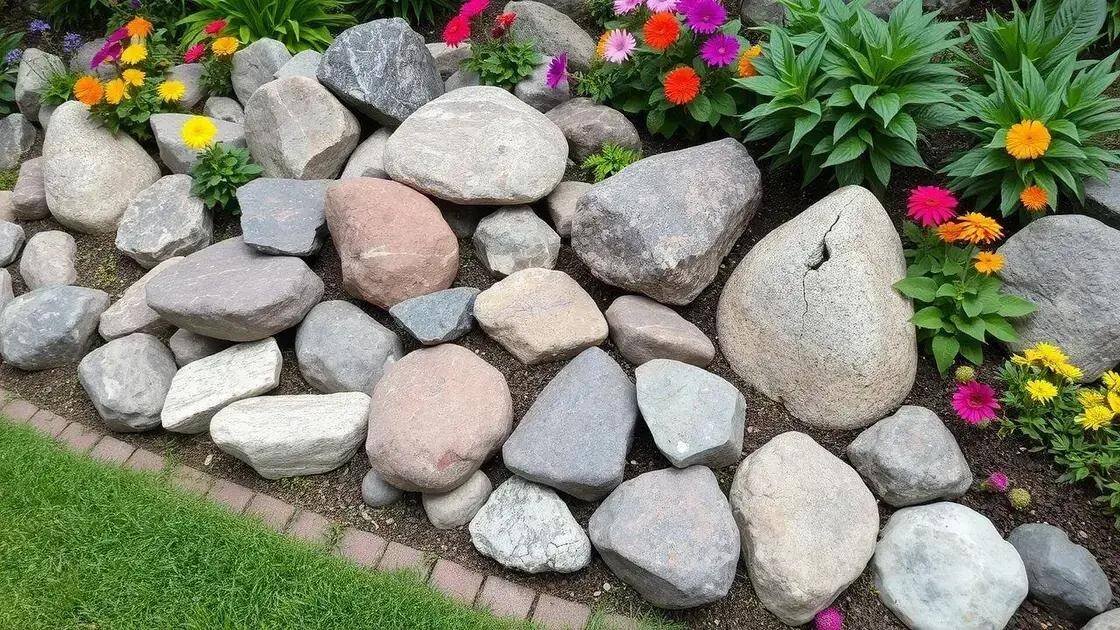
Desert rose care. Are you ready to dive into the enchanting world of desert rose care? Look no further! In this step-by-step guide, we will unravel the secrets to successfully nurturing and maintaining these stunning desert succulents.
Known for their striking beauty and ability to bloom in harsh conditions, desert roses are a favorite among plant enthusiasts. However, caring for these unique plants requires a delicate touch and specialized knowledge.
From understanding the ideal growing conditions to learning how to prevent common diseases and pests, this guide will equip you with all the information you need to keep your desert rose thriving. With our expert tips and techniques, you’ll be amazed at how easily you can boost your plant’s vitality and ensure it thrives for years to come.
Whether you’re a seasoned gardener looking to add a touch of exotic beauty to your collection or a beginner eager to learn, this comprehensive guide will be your trusted companion on your desert rose care journey. Get ready to unlock the secrets and watch your desert rose bloom with unparalleled splendor.
Sumário
Understanding the needs of Desert Rose plants
Desert roses, also known as Adenium obesum, are native to arid regions of Africa and the Arabian Peninsula. These stunning succulents have adapted to survive in extreme heat and drought conditions. To successfully care for desert rose plants, it’s crucial to understand their specific needs.
Desert roses require plenty of sunlight to thrive, so it’s important to choose a location that receives at least 6 to 8 hours of direct sunlight each day. These plants also prefer warm temperatures, ideally between 70°F and 90°F (21°C and 32°C). While they can tolerate higher temperatures, it’s important to protect them from intense afternoon sun to prevent sunburn.
In terms of soil, desert roses prefer well-draining soil with a slightly acidic pH level. A mix of cactus potting soil and perlite or sand works well to provide the right drainage. Avoid using heavy clay or compacted soil, as it can lead to root rot.
To water desert rose plants, it’s important to strike a balance. These succulents are drought-tolerant, but they still require regular watering. Water deeply, allowing the soil to dry out between waterings. Overwatering can cause root rot, so it’s important to avoid excessive moisture. Additionally, desert roses appreciate a slightly humid environment, so misting the leaves occasionally can be beneficial.
Remember to feed your desert rose plant with a balanced fertilizer during the growing season. Use a fertilizer specifically formulated for succulents and follow the instructions on the packaging. Over-fertilizing can lead to leaf burn, so it’s important to apply fertilizer sparingly.
Now that you have a good understanding of the needs of desert rose plants, let’s move on to choosing the right location for your plant.
See also:
Choosing the right location for your Desert Rose plant
When it comes to choosing the right location for your desert rose plant, there are a few key factors to consider. As mentioned earlier, these plants require plenty of sunlight, so it’s important to choose a spot that receives at least 6 to 8 hours of direct sunlight each day.
In addition to sunlight, it’s crucial to protect your desert rose from extreme temperatures. While they can tolerate high temperatures, it’s important to shield them from intense afternoon sun, which can cause sunburn. Placing your plant in a location with some shade during the hottest part of the day can help prevent this.
Another factor to consider is the level of humidity in your chosen location. Desert roses prefer a slightly humid environment, so it’s beneficial to choose a spot that has some humidity. If you live in a dry climate, you can increase humidity by misting the leaves of your plant occasionally.
Lastly, consider the space requirements of your desert rose plant. While they can be grown in containers, they also do well when planted directly in the ground. If planting in a container, choose a pot that is slightly larger than the root ball of your plant. This will allow for adequate root development. If planting in the ground, make sure to give your plant enough space to grow and spread its roots.
With these considerations in mind, you can now choose the perfect location for your desert rose plant. Next, let’s explore the soil requirements for these stunning succulents.
Soil requirements
Choosing the right soil for your desert rose plant is crucial for its overall health and vitality. These succulents require well-draining soil to prevent root rot and other issues.
A good soil mix for desert rose plants consists of cactus potting soil mixed with perlite or sand. The cactus potting soil provides the necessary nutrients, while the perlite or sand improves drainage. This soil mix replicates the arid conditions these plants are accustomed to in their native habitats.
When planting your desert rose, make sure to use a container or pot with drainage holes. This will allow excess water to escape, preventing waterlogged soil. If planting directly in the ground, ensure that the soil has good drainage.
It’s important to note that desert rose plants do not tolerate heavy clay or compacted soil. These types of soil can retain too much moisture, leading to root rot and other issues. Additionally, avoid using garden soil, as it is often too dense and lacks proper drainage.
Now that you know the ideal soil requirements for your desert rose plant, let’s move on to watering and humidity levels.
Watering and humidity levels for Desert Rose plants
Proper watering is crucial for the health and well-being of your desert rose plant. These succulents are drought-tolerant, but they still require regular watering to thrive.
The key to watering desert rose plants is to strike a balance. It’s important to water deeply, allowing the soil to dry out between waterings. This mimics the natural rainfall patterns in their native habitats. Overwatering can lead to root rot, so it’s important to avoid excessive moisture.
To determine when to water your desert rose, check the moisture level of the soil. Stick your finger about an inch into the soil. If it feels dry, it’s time to water. If it feels moist, wait a few more days before watering.
In addition to regular watering, desert roses appreciate a slightly humid environment. This can be achieved by misting the leaves occasionally. However, be mindful not to overdo it, as excessive moisture can lead to fungal diseases.
It’s important to note that watering requirements may vary depending on factors such as temperature, humidity, and the size of your plant. Pay close attention to your plant’s needs and adjust your watering schedule accordingly.
Now that you know how to properly water your desert rose plant, let’s move on to fertilizing and feeding.
Fertilizing and feeding your Desert Rose plant
Fertilizing your desert rose plant is essential for its growth and overall health. These plants have specific nutritional needs that can be met with the right fertilizer.
During the growing season, which typically runs from spring to fall, it’s important to feed your desert rose with a balanced fertilizer. Look for a fertilizer specifically formulated for succulents, as these will have the ideal nutrient ratios.
When fertilizing your desert rose, it’s important to follow the instructions on the packaging. Over-fertilizing can cause leaf burn and other issues, so it’s crucial to apply fertilizer sparingly. A general rule of thumb is to fertilize your plant every two to four weeks during the growing season.
To apply the fertilizer, dilute it according to the instructions and water your plant as you normally would. This will ensure that the nutrients are distributed evenly throughout the soil.
It’s important to note that desert roses do not require fertilization during the dormant period, which typically occurs in winter. During this time, it’s best to withhold fertilizer to allow your plant to rest.
By providing your desert rose with the right nutrients at the right time, you can ensure its optimal growth and vibrant blooms. Now that you know how to fertilize your plant, let’s move on to pruning and shaping.
Pruning and shaping
Pruning and shaping your desert rose plant is an important part of its care routine. Regular pruning helps maintain the plant’s shape, removes dead or diseased growth, and encourages new growth.
The best time to prune your desert rose is during its dormant period, which typically occurs in winter. During this time, the plant is not actively growing, making it easier to prune without causing stress.
To prune your desert rose, start by inspecting the plant for any dead or diseased growth. Using clean, sharp pruning shears, carefully remove any damaged or dead branches. This will not only improve the plant’s appearance but also prevent the spread of diseases.
In addition to removing dead or diseased growth, you can also shape your desert rose plant through pruning. If you want to encourage branching and a bushier growth habit, prune the tips of the branches. This will stimulate new growth and create a fuller plant.
When pruning, it’s important to make clean cuts just above a leaf node or a dormant bud. This will promote healthy growth and prevent the development of weak or leggy branches.
It’s important to note that desert rose plants have a milky sap that can be irritating to the skin and eyes. When pruning, be cautious and wear gloves to protect yourself. If you come into contact with the sap, wash the affected area with soap and water.
With regular pruning and shaping, you can ensure that your desert rose plant maintains its desired appearance and continues to thrive. Now that you know how to prune your plant, let’s move on to dealing with common pests and diseases.
Dealing with common pests and diseases
Like any other plant, desert roses are susceptible to pests and diseases. However, with proper care and vigilance, you can prevent and manage these issues effectively.
One of the most common pests that affect desert rose plants is the spider mite. These tiny pests feed on the plant’s sap, causing yellowing leaves and webbing. To control spider mites, regularly inspect your plant for any signs of infestation. If detected, you can use insecticidal soap or neem oil to treat the affected areas.
Another common pest that can affect desert roses is the mealybug. These small, white insects feed on the plant’s sap and can cause stunted growth and leaf drop. To control mealybugs, gently wipe them off the plant using a cotton swab dipped in rubbing alcohol. You can also treat the plant with insecticidal soap or neem oil.
In addition to pests, desert rose plants can also be susceptible to fungal diseases such as root rot and powdery mildew. To prevent fungal diseases, it’s important to provide adequate air circulation and avoid overwatering. If your plant shows signs of fungal infection, such as blackened or mushy roots, it’s important to take immediate action. Remove the affected parts and treat the plant with a fungicide.
Regularly inspecting your desert rose plant for pests and diseases will help you catch any issues early on and prevent them from spreading. With proper care and prompt action, you can keep your plant healthy and thriving. Now that you know how to deal with common pests and diseases, let’s move on to propagating desert rose plants.
Propagating Desert Rose plants
Propagating desert rose plants can be a rewarding way to expand your collection or share the beauty of these succulents with others. There are several methods you can use to propagate desert roses, including stem cuttings, grafting, and seed propagation.
Stem cuttings are one of the most popular and easiest methods of propagating desert roses. To propagate through stem cuttings, select a healthy branch and cut it just below a leaf node. Remove the leaves from the lower part of the cutting and allow it to dry for a few days. Once the cutting has calloused, plant it in a well-draining soil mix and water sparingly. With time, the cutting will develop roots and start to grow.
Grafting is another method of propagating desert roses, particularly for rare or unique varieties. This technique involves joining a desert rose cutting, known as the scion, onto the rootstock of another desert rose plant. Grafting requires some specialized knowledge and skill, so it’s best to learn from experienced grafters or seek professional help.
Seed propagation is another option for propagating desert rose plants. However, it’s important to note that desert rose seeds have a low germination rate and can take a long time to grow into mature plants. If you choose to propagate through seeds, sow them in a well-draining soil mix and provide the right conditions for germination.
Whichever propagation method you choose, it’s important to provide the right conditions for the new plants to grow. This includes providing adequate sunlight, well-draining soil, and regular watering.
With proper care and patience, you can successfully propagate desert rose plants and expand your collection. Now that you know how to propagate these succulents, let’s move on to the conclusion.
Enjoying the beauty of your thriving Desert Rose plant
Congratulations! You have unlocked the secrets to successful desert rose care. By understanding the needs of these unique plants, choosing the right location, providing the ideal soil and watering conditions, fertilizing and feeding, pruning and shaping, dealing with pests and diseases, and propagating, you are well-equipped to ensure the health and vitality of your desert rose plant.
Remember, caring for desert roses requires a delicate touch and specialized knowledge, but with our step-by-step guide, you can confidently navigate the world of desert rose care. Whether you’re a seasoned gardener or a beginner, these stunning succulents will reward you with their striking beauty and resilience.
So go ahead, apply the expert tips and techniques you’ve learned and watch your desert rose bloom with unparalleled splendor. Enjoy the beauty and joy that these plants bring to your space, and share your newfound knowledge with others who are eager to explore the enchanting world of desert rose care.
Unlock the secrets, nurture your plant, and embark on an exciting journey of desert rose care. Happy gardening!
Esta publicação Unlock the Secrets to Successful Desert Rose Care: A Step-by-Step Guide foi referenciada pela primeira vez no blog Receitinhas da Vovó Ana.



